





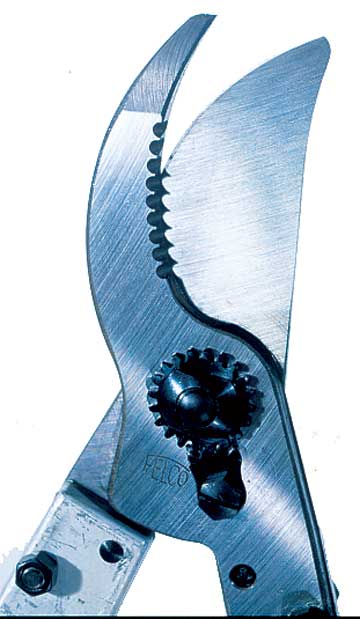 Look for sharp, tightly alignedblades with smoothly functioninggears.
Look for sharp, tightly alignedblades with smoothly functioninggears.
Hand pruners are lighter and more maneuverable than either loppers or shears. They are also the tool used most often for making precision snips, thinning out unwanted branches, and reaching places other tools can't. Pruners can cut soft green wood up to 3/4 inch in diameter and hard old wood up to 1/2 inch across. Each type of pruner -- bypass and anvil -- has its advantages.
Discover the power tools that can make gardening easier.
continue reading below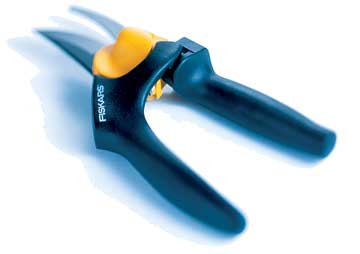 Bypass Pruner
Bypass Pruner
This pruner uses a scissoring action: A curved cutting blade severs stems as it passes the base. Bypass pruners are best used on green and growing stems. Use them to thin shrubs such as dogwood, forsythia, lilac, Deutzia, and mock orange in spring; to perform maintenance pruning in summer on shrubs such as Potentilla and Spiraea; and to trim woody perennials, roses, and flowers.
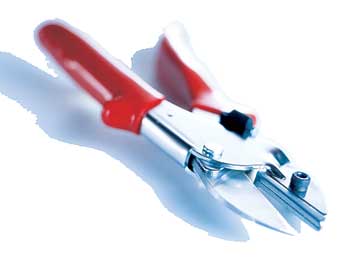 Anvil Pruner
Anvil Pruner
This pruner is equipped with a wedge-shape top blade and uses a splitting action. Anvil pruners are ideal for pruning dry branches and stems. In spring, thin out old growth on hydrangea, elderberry, butterfly bush, and other woody-stem shrubs. Prune away dead growth on roses in early spring. In late spring, prune half of the candles (new growth) on pines to promote bushiness. Prune yews in late summer.
Choose a bypass pruner if the landscape is young. If the landscape is overgrown, select an anvil pruner, which works better on old wood. (Or select both for all needs.) Check hand-to-handle width. Pick one that's easy to grasp. Don't overstretch to open and close a pruner. Pruners come in a variety of sizes; there are also models designed for left-handed gardeners.
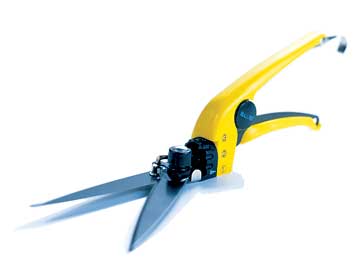 Bright-colored handles make
it easier to keep track of
your tools.
Bright-colored handles make
it easier to keep track of
your tools.
Of the cutting tools outlined here, hedge shears pose the greatest variety in blades, handle, and use. Available with single action or gear-driven action, shears generally feature blades 7 to 9 inches long and handles 9 to 15 inches long. If evergreens are in need of sculpting, shrubs require containment, or clumps of spent perennials call for a thorough deadheading, grab a pair of hedge shears.
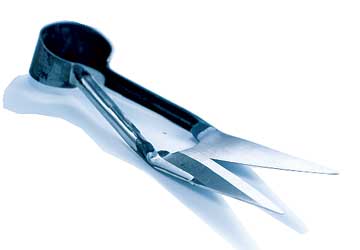 These shears are great for
giving plants a light trim.
These shears are great for
giving plants a light trim.
Any plant that has thin branches (1/4 inch or less in diameter) can be sheared. Evergreens that respond well to shearing include boxwood and yew. Thin-limbed shrubs, such as privet and holly also can be sheared. Use shears only on tender new growth; save older, harder stalks for pruners or loppers. Perennials grown in mass plantings, such as coreopsis, lavender, or dianthus, may be sheared after flowering to encourage a second flush.
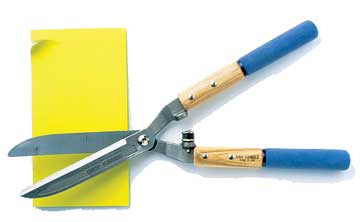 Long handles and blades
balance the shears.
Long handles and blades
balance the shears.
Serrated and wavy-edge blades catch flyaway branches and hold them closer to the inner part of the blades, where the cutting action is sharpest. Wavy-style handles are easier to grip when shearing overhead. Comfortable grips and durable rubber stops cushion the jarring effect of the blades banging together. Shears with long handles and blades give leverage and help shape large bushes, but they are also heavier and more taxing to use. Smaller models are lighter, easier to tuck into confined spaces, and simpler to control for precision shaping.
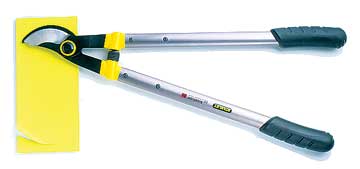 Long-Handle Lopper
Long-Handle Lopper
Measuring up to 36 inches in length, long-handle loppers extend pruning reach to get into the thickest of thickets or stretch overhead to lop off branches without the aid of a ladder. Loppers are best used in conjunction with a hand pruner, using the smaller tool for branches and reserving the lopper for more massive limbs.
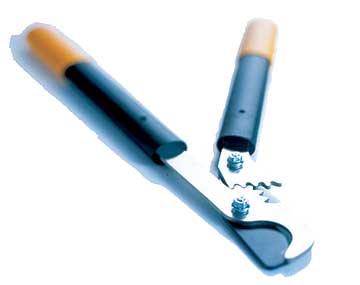 Small Lopper
Small Lopper
Branches 1 to 2-1/2 inches in diameter can be cut with loppers (branches too thick for the lopper require the use of a pruning saw). Loppers work extremely well for pruning fruit trees such as apple, peach, and pear; vines such as table grapes; and nut trees such as pecan and chestnut.
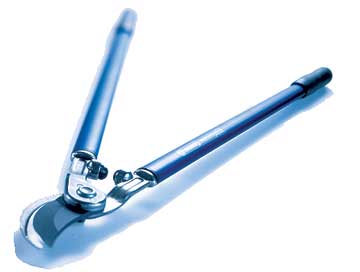 Bypass Lopper
Bypass Lopper
Think lightweight when choosing loppers; the longer they are, the heavier they'll feel. Loppers with fiberglass or aluminum handles are the lightest. Look for rubber stoppers and cushion grips, both of which lessen the shock of thick cutting. Buy loppers with an ergonomic design and gear-driven or ratchet action to raise mechanical advantage. As with pruners, evaluate the two styles of blades: anvil or bypass.
Copyright © www.100flowers.win Botanic Garden All Rights Reserved